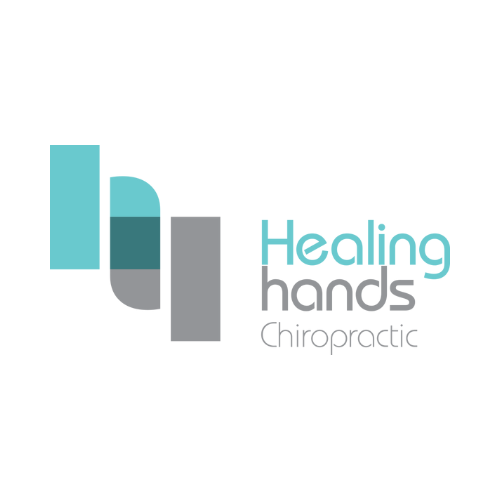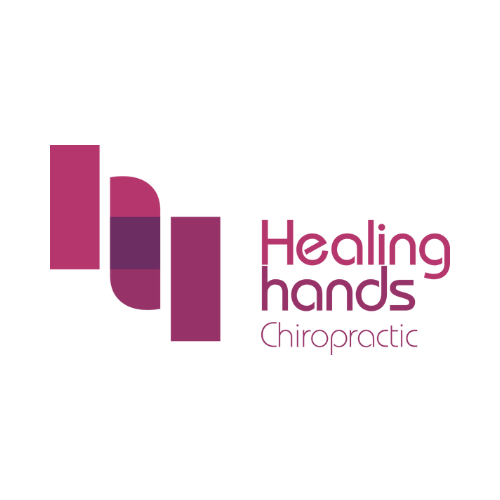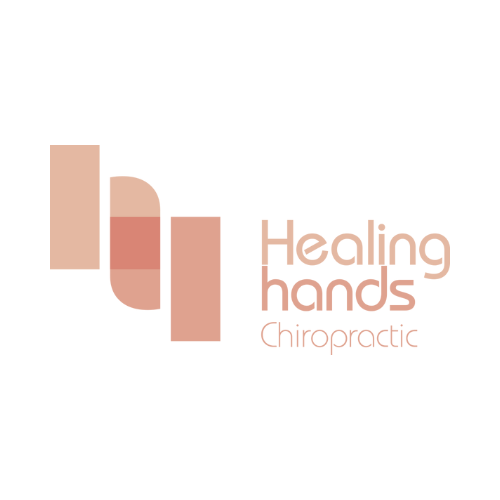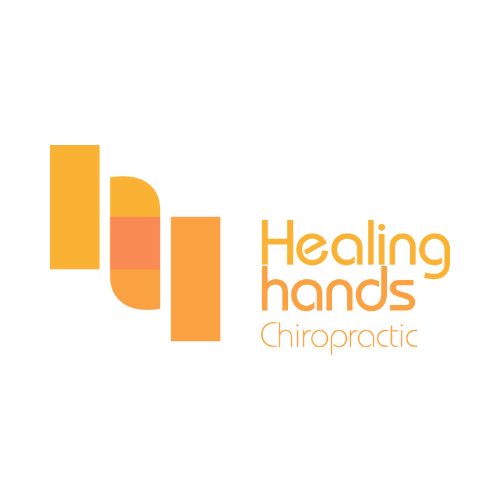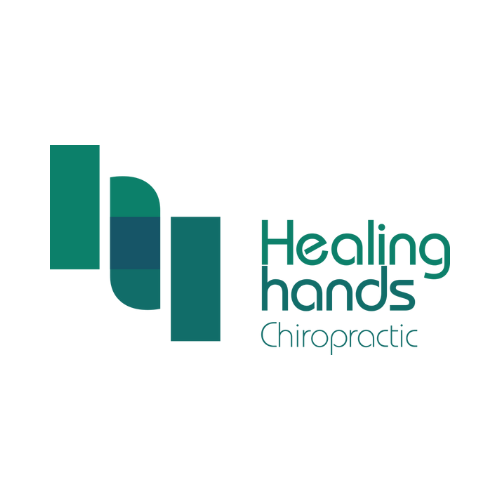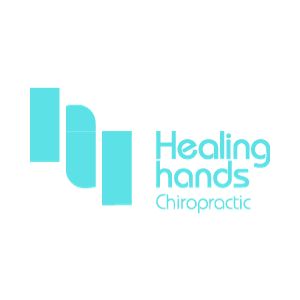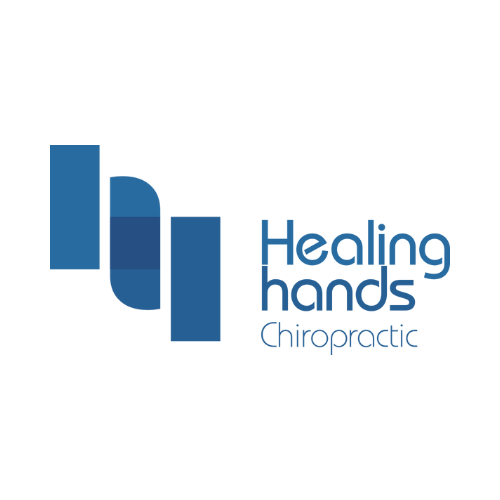Sports Injuries
What is sports injuries?
Sports injuries occur during exercise, athletic activities, or sports activities. There are various things that would increase the risk of sports injuries such as failing to warm up. These injuries can result from accidents, poor training practices, inadequate equipment, lack of conditioning, or can be a result of pushing oneself too hard. Some injuries can be a result of something that has been building over time due to repetitive motion, known as overuse injuries.
Sports injury is a type of injury caused by exercise or sports which involves the musculoskeletal system of our body (muscles, ligaments, joints, bones, and cartilage).
Sports Injuries Facts!
- Chiropractic care has been a great help to the Olympics Athletes since 1976.
- According to Mount Elizabeth Hospital,
- 65% of sports injury cases involve people aged 5 – 24
- 39% of sports injury patients are female and 61% are male
- 28% of sports injury cases resulted from falls
What are the symptoms of sports injuries?
The symptoms of a sports injury can vary depending on the type and severity of the injury, as well as the specific body part affected. Common symptoms include:
Pain: This is the most common symptom. The intensity and nature (sharp, dull, throbbing) of the pain can vary depending on the injury.
Swelling: Often occurs soon after the injury.
Redness or Bruising: A sign of bleeding or inflammation in the area.
Restricted Movement: Difficulty or inability to move a joint normally.
Weakness: The affected area may feel weaker than usual.
Stiffness: The joint may not move as fluidly as it normally does.
Instability: The feeling that a joint might give out or is unstable.
Deformity: A visible change in the shape or alignment of a bone or joint, indicating potential fractures or dislocations.
Tenderness: The area is sensitive to touch.
Numbness or Tingling: This can indicate nerve involvement or damage.
Audible Sounds at Injury: A “pop” or “snap” might be heard at the time of injury, which can sometimes indicate a severe injury like a ligament tear.
Recurring or Persistent Pain: Pain that doesn’t go away or that recurs frequently even with rest.
Limping: This can be due to pain, weakness, or structural damage.
Dizziness or Lightheadedness: Especially in cases of head injuries or concussions.
If an individual suspects a sports injury, it’s crucial to stop the activity to prevent further harm. Consulting with a healthcare professional for a proper diagnosis and treatment is essential. Some injuries might seem minor initially but can become more severe if not treated appropriately. In cases of severe injuries, such as suspected fractures, dislocations, or concussions, immediate medical attention is necessary.
Most common sports injuries include:
- Sprains and strains
- Knee injuries
- Inflammation (tendonitis, bursitis, etc.)
- Shin splint
- Rotator cuff injuries
- Fractures
- Dislocations
What are the complications from sports injuries?
Complications from sports injuries can range from physical to psychological and may have long-term consequences if not addressed properly. Some potential complications include:
- Chronic Pain: Lingering discomfort from unresolved injuries.
- Decreased Mobility: Limited joint movement due to stiffness or scar tissue.
- Weakness: Reduced strength in the injured area.
- Chronic Instability: Recurring sprains or dislocations, especially in ligament injuries.
- Arthritis: Increased risk post-injury.
- Re-injury: More vulnerability in previously injured areas.
- Compartment Syndrome: Elevated pressure in muscle compartments, risking muscle and nerve damage.
- Growth Plate Issues (in Children): Potential for abnormal bone growth.
- Neurological Complications: Concerns like post-concussion syndrome from head injuries.
- Psychological Impact: Anxiety, depression, or fear of re-injury.
- Muscle Atrophy: Muscle wasting from prolonged inactivity.
- Economic Burden: Costs from treatments and potential lost earnings.
- Loss of Athletic Opportunity: For competitive athletes, prolonged recovery or permanent injury can impact scholarship opportunities, professional contracts, or career longevity.
It’s important to address sports injuries promptly and thoroughly. Adequate rehabilitation and adhering to medical advice are vital in reducing the risk of complications.
The common causes of sports injuries:
Engaging in sports and physical activities is a vital aspect of a healthy lifestyle. However, with the thrill and benefits of sports come the inherent risks of injuries. Whether you’re a professional athlete, a weekend warrior, or someone just starting a new exercise regimen, understanding the common causes of sports injuries is essential in preventing them.
- Over-Training: A sports injury can result from excessive fatigue in combination with insufficient recovery time. Insufficient rest before or after high-intensity training would weaken or damage the body, therefore increasing the risk of injury.
- Repetitive Overuse: Most athletes tend to repeat the same motion over and over. Due to this repetitive movement, certain muscles or joints get overused and gradually become weakened or damaged, resulting in a sports injury.
- Skipping Warm-Up: It is important that you get your body prepared before you start any physical activities. A proper warm-up helps to increase body temperature and circulation to the muscles. 20 minutes of stretching and light cardio exercises will improve your performance and reduce the risk of injury.
- Poor Posture/Technique: Improper posture or techniques put a great burden to the joints and muscles that are used during the workout. Initially, it would start off with minor symptoms such as mild discomfort but over time it can result in a serious injury.
- Incorrect Equipment: Using worn-out shoes, ill-fitting gear, or inappropriate equipment for a sport can lead to imbalance, lack of protection, or undue stress on certain body parts.
- Poor Nutrition and Hydration: Not fueling the body adequately or dehydration can reduce muscle function and recovery, increasing susceptibility to cramps and injuries.
- Returning Too Soon: Jumping back into rigorous activity without fully recovering from a prior injury can exacerbate the condition or lead to other injuries.
In the realm of sports and physical activity, injuries can often feel like an inevitable setback. However, by being aware of the prevalent causes, individuals can take proactive steps in training, equipment selection, and overall self-awareness to mitigate these risks. It’s not merely about preventing pain or downtime but ensuring a sustainable, healthy, and enjoyable athletic journey throughout one’s life.
How to prevent sports injury:
Preventing sports injuries is essential for athletes of all levels, from amateurs to professionals. By taking precautions, one can reduce the risk of injury and ensure a safer and more enjoyable experience. Here are several strategies to prevent sports injuries:
- Rest: Ensure you have enough rest and recovery time before the next training.
- Warm-up: Prepare your body with a proper warm-up.
- Techniques: Improve/Correct your techniques by having a coach or a professional to monitor.
- Posture: Improve your posture and movement by seeing chiropractors at Healing Hands to ensure proper alignment of your spine.
Wear Appropriate Equipment: Protective gear, such as helmets, mouth guards, pads, or shin guards, should be worn as required. Also, ensure that sports equipment, like shoes, is in good condition and fits properly.
Stay Hydrated: Dehydration can lead to muscle fatigue and decrease performance, making injuries more likely.
Avoid Overuse: Overtraining can lead to chronic injuries. Ensure you give specific muscle groups time to recover and consider cross-training to use different muscle sets.
Listen to Your Body: If you feel pain, fatigue, or discomfort, it’s crucial to stop and rest. Pushing through pain can lead to severe injuries.
Get Regular Check-ups: Medical evaluations can catch potential issues before they become problematic.
By following these guidelines and staying informed, athletes can maximize their performance while minimizing the risk of injury. It’s essential to remember that no matter how many precautions are taken, it’s impossible to eliminate the risk entirely. However, these strategies can significantly reduce the chances of getting hurt.
Do i need to see a doctor for sports injuries? When should I see a doctor?
Whether or not to see a doctor after a sports injury often depends on the severity and type of the injury. While minor injuries might be managed at home with rest and self-care, certain signs and symptoms indicate that you should seek medical attention.
Severe Pain: If the pain is intense and doesn’t show improvement after a day or so, it’s a good idea to consult a doctor.
Swelling: Some swelling can be expected with injuries, but if it’s excessive, doesn’t decrease with rest and elevation, or is accompanied by severe pain, see a doctor.
Joint Instability: If a joint feels loose or unstable, or if you’re unable to bear weight or use the affected limb, it might indicate a serious ligament injury or fracture.
Visible Deformities: If there’s a noticeable deformity in the injured area, like a bone sticking out or a joint appearing out of place, seek immediate medical attention.
Limited Range of Motion: If you cannot move the injured area or joint as you normally would, it’s worth having it examined.
Prolonged or Recurrent Symptoms: If symptoms don’t improve with home care after several days or if you’re experiencing recurrent injuries in the same area, see a doctor.
Numbness or Tingling: This can be a sign of nerve damage or compression and should be evaluated.
Sounds at the Time of Injury: If you heard a “pop” or “snap” during the injury, it might indicate a severe issue like a ligament tear.
Joint Locking: If a joint locks up and can’t be moved, it might indicate a torn meniscus or other internal injury.
Concussion Symptoms: If you suspect a concussion (symptoms might include headache, dizziness, confusion, nausea, light sensitivity), it’s essential to seek medical attention immediately.
Open Wounds: Any cuts or wounds that occurred during the injury, especially if there’s a risk of foreign objects being embedded, should be examined to prevent infection and ensure proper healing.
While many sports injuries can be treated at home using the R.I.C.E. method (Rest, Ice, Compression, Elevation), it’s crucial to listen to your body and err on the side of caution. When in doubt, it’s always a good idea to consult with a medical professional to ensure that the injury is appropriately diagnosed and managed.
What are the treatments for sports injuries?
The treatment for sports injuries varies based on the type, severity, and location of the injury. Here are some general treatments and interventions commonly employed for sports injuries:
Medication: Pain relievers and anti-inflammatories: Over-the-counter medications like ibuprofen or acetaminophen can help manage pain and reduce inflammation. Topical pain relievers: Creams and ointments can provide temporary relief from pain.
Physical Therapy: Therapists can guide recovery, recommend exercises to restore mobility and strength, and suggest strategies to prevent further injury.
- Chiropractic Manipulation: Chiropractic adjustments help in reducing pain by restoring proper alignment and function to the joints, thereby relieving pressure and irritation on nerves and surrounding tissues. Injuries can result in restricted joint movement. Chiropractic care can help restore normal joint function, increasing range of motion and flexibility.
Immobilization: Braces, casts, or splints can be used to keep an injured area immobile and protected as it heals.
Surgery: Some injuries, like torn ligaments or displaced fractures, might require surgical intervention to ensure proper healing.
Corticosteroid Injections: For certain conditions, like severe inflammation or chronic tendon issues, a doctor might recommend a steroid injection to reduce inflammation.
Biomechanical Analysis: For recurrent injuries, an analysis of the individual’s biomechanics may identify abnormal patterns of movement that contribute to injury.
Modalities in Physical Therapy: Techniques like ultrasound, electrical stimulation, or cold laser therapy might be used to promote healing and reduce pain.
Massage: Helps to reduce muscle tension, improve circulation, and promote relaxation and healing.
Heat Therapy: Used in later stages of healing, heat can relax and loosen tissues and stimulate blood flow to the area.
Athletic Taping or Bracing: To provide support and protection, especially when returning to activity post-injury.
It’s important to remember that the appropriate treatment for a sports injury depends on the specifics of the injury. Thus, a professional evaluation is essential to determine the best treatment approach.
Is chiropractic treatment good for sports injuries? Should i see a chiropractor?
Chiropractic care has been utilized by many athletes, both amateur and professional, for the treatment of sports injuries and for performance enhancement. Here’s an overview of its potential benefits and considerations:
Non-invasive: Chiropractic care offers treatment options that don’t involve surgery or invasive procedures.
Pain Management: Chiropractic adjustments can help reduce pain by correcting misalignments and imbalances in the spine and other joints.
Improved Mobility: Adjustments can help restore joint mobility that might be restricted due to injury.
Reduction in Muscle Tension: Chiropractors can use techniques to reduce muscle tightness, which can help in healing and pain relief.
Holistic Approach: Chiropractors often look at the whole body and may identify issues elsewhere that contribute to pain in a specific area.
Injury Prevention: Regular adjustments might help identify potential issues before they become significant injuries.
- Bone Aligntment: Aligning the spine and extremities (shoulder, Back, elbow, wrist, knee, and ankle) in the right manner
- Advanced soft tissue techniques: Active release technique, Graston etc.
- Professional Advice: Providing lifestyle advice and exercises to rehabilitate and strengthen the body
In conclusion, while chiropractic care can be a valuable tool in the management and recovery from sports injuries, it’s essential to take an informed and holistic approach to your health. It’s always wise to consult with various healthcare professionals to ensure you’re getting the best care for your specific injury and needs.
At Healing Hands Chiropractic Singapore, our main goal is to get to the root of the issue and handle it with precise non-invasive techniques that help relieve pain altogether and ensure the quickest, fullest recovery.
Why Choose Us?
Healing Hands Chiropractic has been in the industry for 12 years and has a team of experienced chiropractors dedicated to helping patients with tension relief and management. We are experienced in relieving tensions and are able to help you to manage the pain using holistic and effective means. Healing Hands Chiropractic Singapore is one of the most reviewed and trustable chiropractic clinic. With over 1600+ five star reviews and real before vs after patients photos, you can entrust us with your health!
Get Rid of the pain today
Want To Have a Healthier and Happier life?
Book Your Appointment Today!
What To Expect During Your 1st Visit
Identifying postural imbalances to detect any differences in weight between the right and the left sides of the body, alignment from our head all the way down
to our hips. Tyron thermographic spinal scan helps to measure the muscle temperature around the spine. It detects areas with the greater temperature where muscles are working harder due to poor posture.
1-on-1 consultation with our Chiropractors with a detailed review of your health history.
Our Chiropractor will investigate and educate you on the necessary steps forward in reaching your health goals.
Our Chiropractors will perform a series of range of motion tests to determine your current body condition and an adjustment will be administered if deemed
clinically safe to do so.
Our Chiropractors will use their hands or a small instrument to apply a controlled force to the spinal joints. “Crack” or “Pop” sound may occur as your spine gets manipulated. Do not be alarmed, as the adjustment releases trapped gasses from your joints.
X-Rays will be prescribed so that we can accurately diagnose your condition before prescribing a customized treatment program. It is also for your safety and for us to rule out any possible underlying conditions that cannot be treated by Chiropractic.
The review of your X-rays is complimentary at your following visit if you take up the X-rays with our preferred diagnostic partners.
Frequently Asked Questions
A chiropractor provides non-invasive treatments with the benefits of spinal adjustments and realigning the joints to improve the system and function throughout the body.
In general, chiropractors believe in the ability of the body to self-heal through Chiropractic adjustment with the help of modalities such as the Flexion distraction table, E-stim, Denneroll, and functional exercises. They also utilize various other treatment modalities such as ultrasound, bodywork, etc. to get patients back to health.
We recommend seeing one if you are experiencing any discomfort, pains or aches in your muscles or joints. Check out the list of conditions we treat here.
Most importantly, do not wait until you are experiencing pain or worse, numbness to see a chiropractor. Often, pain is the last thing that shows up but the first to go away after chiropractic treatment.
There is no better time to visit the highest rated chiropractor in Singapore. Book your appointment here.
Chiropractic adjustment should not be painful. However, in some instances when the injury is either acute (happened recently) or sub-acute(on the road to recovery), the muscles and ligaments may prove to be guarded or sensitive to the touch, these are some exceptions.
A thorough examination of your complaints and conditions can alleviate any concerns that you may have.
It is a very safe & accurate thermographic scanner that scans the full spine or segmental parts of the spine in approximately 15 seconds. The Tytron detects areas of asymmetry as well as indicate areas with greater temperature due to acute soft tissue damage.
The Tytron scanner uses precision sensors, speciality lenses and a unique focusing system to give the chiropractor the most accurate and repeatable information available. You will be given a print out of your result on the first visit.
Book your first appointment with us to experience the Healing Hands chiropractic journey.
X-rays are recommended if you want to take care of your condition holistically and to get to the root of the issues. It is also for the patients safety and for us to rule out any possible underlying conditions that cannot be treated by Chiropractic adjustment. Just like your regular health check up, X-rays serve to give you and the chiropractor an insight to your spinal health as our naked eyes can only tell a rough story.
Our Chiropractors will use their hands or a small instrument to apply a controlled force to the spinal joints.
A “Crack” or “Pop” sound may occur as your spine gets manipulated. Do not be alarmed, as the adjustment releases trapped gasses from your joints.
Yes, we have both Male and Female Chiropractors at Healing Hands Chiropractic Singapore.
Our Female Chiropractors are stationed at Healing Hands Ang Mo Kio.and Healing Hands Bedok
All our Chiropractors believe in personalised care supported by time-tested techniques enhanced with the most efficient time frame. All our Chiropractors embody our 3 core values; Care For Patient, Integrity and Attention to Detail.
Yes, neck adjustments are a very safe treatment when performed by chiropractors as they are trained in the correct techniques to manipulate the joints safely. Healing Hands chiropractors also ensure that it is clinically safe enough for the adjustment before they perform it. This is also one of the reason why X-rays are required before more customised treatment can be done to ensure that your body is able to receive it.
The benefits of getting chiropractic treatment helps with reducing pain and increase joint mobility. We’ve written an article all about it here.
There also seems to be a lot of concern about the safety of getting adjusted by a chiropractor. However, when done by a professional chiropractor, spinal manipulation and Chiropractic care are generally considered safe, and effective treatments for acute pain.
Healing Hands Chiropractic Singapore has been treating thousands of patients since 2010 and many have benefited from it.
We hope to tell people more about chiropractic so that more can come to understand and appreciate how chiropractors can help with the various conditions for the people in Singapore.ut chiropractic so that people can understand and appreciate Chiropractic.
According to MOH, there are currently 150 chiropractors in Singapore. Choosing the most effective chiropractor for you may be challenging.
That is why we have written an article about 5 ways to find a good Chiropractor. In short,
1) Know your own health goals.
2) Integrity and confidence of the Chiropractor.
3) Word of mouth or reviews about the Chiropractor.
4) Clinical competency and experience of the Chiropractors.
5) The willingness of the Chiropractor to refer out.

